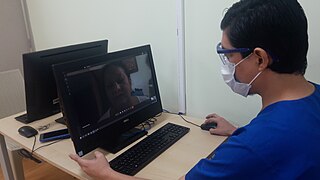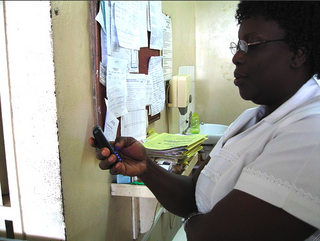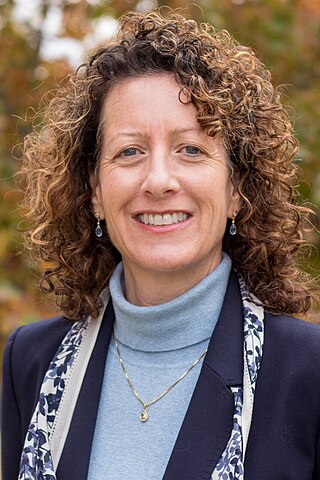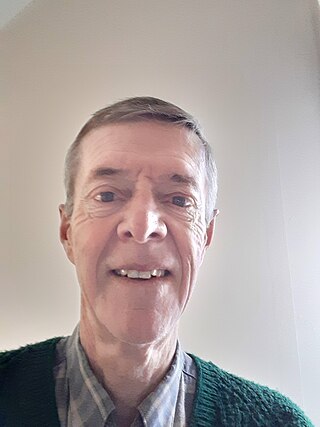Outsourcing includes both foreign and domestic forms of outside contracting. It is an agreement in which one company hires another company to be responsible for a planned or existing activity which otherwise is or could be carried out internally, i.e. in-house, and sometimes involves transferring employees and assets from one firm to another. The term outsourcing, which came from the phrase outside resourcing, originated no later than 1981 at a time when industrial jobs in the United States were being moved overseas, contributing to the economic and cultural collapse of small, industrial towns.
Offshoring is the relocation of a business process from one country to another—typically an operational process, such as manufacturing, or supporting processes, such as accounting. Usually this refers to a company business, although state governments may also employ offshoring. More recently, technical and administrative services have been offshored.

Computer-mediated reality refers to the ability to add to, subtract information from, or otherwise manipulate one's perception of reality through the use of a wearable computer or hand-held device such as a smartphone.

Telehealth is the distribution of health-related services and information via electronic information and telecommunication technologies. It allows long-distance patient and clinician contact, care, advice, reminders, education, intervention, monitoring, and remote admissions. Telemedicine is sometimes used as a synonym, or is used in a more limited sense to describe remote clinical services, such as diagnosis and monitoring. When rural settings, lack of transport, a lack of mobility, conditions due to outbreaks, epidemics or pandemics, decreased funding, or a lack of staff restrict access to care, telehealth may bridge the gap as well as provide distance-learning; meetings, supervision, and presentations between practitioners; online information and health data management and healthcare system integration. Telehealth could include two clinicians discussing a case over video conference; a robotic surgery occurring through remote access; physical therapy done via digital monitoring instruments, live feed and application combinations; tests being forwarded between facilities for interpretation by a higher specialist; home monitoring through continuous sending of patient health data; client to practitioner online conference; or even videophone interpretation during a consult.
Ramesh Chandra Jain is a scientist and entrepreneur in the field of information and computer science. He is a Bren Professor in Information & Computer Sciences, Donald Bren School of Information and Computer Sciences, University of California, Irvine.
Virtual reality in telerehabilitation is a method used first in the training of musculoskeletal patients using asynchronous patient data uploading, and an internet video link. Subsequently, therapists using virtual reality-based telerehabilitation prescribe exercise routines via the web which are then accessed and executed by patients through a web browser. Therapists then monitor the patient's progress via the web and modify the therapy asynchronously without real-time interaction or training.
Neusoft Corporation is a Chinese multinational provider of software engineering services, Information Technology services, product engineering services, IT education and medical equipment headquartered in Shenyang, China.
Robert S. H. Istepanian is a visiting professor at the Faculty of Medicine, Institute of Global Health Innovation, Imperial College, London. Istepanian is widely recognized as the first scientist to coin the phrase m-Health. In 2012, Istepanian coined the new term 4G Health which is defined as "The evolution of m-health towards targeted personalized medical systems with adaptable functionalities and compatibility with the future 4G networks."

mHealth is an abbreviation for mobile health, a term used for the practice of medicine and public health supported by mobile devices. The term is most commonly used in reference to using mobile communication devices, such as mobile phones, tablet computers and personal digital assistants (PDAs), and wearable devices such as smart watches, for health services, information, and data collection. The mHealth field has emerged as a sub-segment of eHealth, the use of information and communication technology (ICT), such as computers, mobile phones, communications satellite, patient monitors, etc., for health services and information. mHealth applications include the use of mobile devices in collecting community and clinical health data, delivery/sharing of healthcare information for practitioners, researchers and patients, real-time monitoring of patient vital signs, the direct provision of care as well as training and collaboration of health workers.
The Offshoring Research Network is an international network of researchers and practitioners studying organizations in their transition to globalizing their business functions, processes and administrative services. The ORN conducts annual surveys tracking global sourcing strategies, drivers, concrete implementations and plans across all business functions and processes.
Informatics is the study of computational systems. According to the ACM Europe Council and Informatics Europe, informatics is synonymous with computer science and computing as a profession, in which the central notion is transformation of information. In some cases, the term "informatics" may also be used with different meanings, e.g. in the context of social computing, or in context of library science.
James M. Tien, Ph.D., DEng (h.c.), is distinguished professor and former dean of the University of Miami College of Engineering. He has worked previously at Bell Laboratories, Rand Corporation and Rensselaer Polytechnic Institute.
William H. Gruber is an American organizational theorist, former professor at MIT, Boston College and Northeastern University, consultant and author, known for his work in the field of computer technology in business in the 1980s.
Robotic process automation (RPA) is a form of business process automation that is based on software robots (bots) or artificial intelligence (AI) agents. It is sometimes referred to as software robotics.
Yehia Massoud has had significant progressive academic leadership and has been involved in forging and building effective partnerships with numerous academic and industrial institutions, and international organizations, and governmental funding agencies.
Communication in Distributed Software Development is an area of study that considers communication processes and their effects when applied to software development in a globally distributed development process. The importance of communication and coordination in software development is widely studied and organizational communication studies these implications at an organizational level. This also applies to a setting where teams and team members work in separate physical locations. The imposed distance introduces new challenges in communication, which is no longer a face to face process, and may also be subjected to other constraints such as teams in opposing time zones with a small overlap in working hours.

Mary Cecilia Lacity[1] is a David D. Glass Chair and a distinguished professor of Information Systems at the University of Arkansas, Sam M. Walton College of Business.

Michael (Mike) Papazoglou is a Greek/Australian emeritus professor, computer science researcher and author known for his contributions to 'Service-Oriented Computing'. His main research interests include Distributed computing, Database#Database management system, Big data, Service, Domain-specific language and Cloud computing. In more recent years he shifted his focus to pursuing Emerging technologies, Industrial engineering, Smart Applications and Smart Technology Solutions for Healthcare and Manufacturing.

Ewart R Carson is a British chartered engineer, system scientist, author, and academic. He is a Professor Emeritus of Systems Science in the School of Science and Technology at City, University of London.






